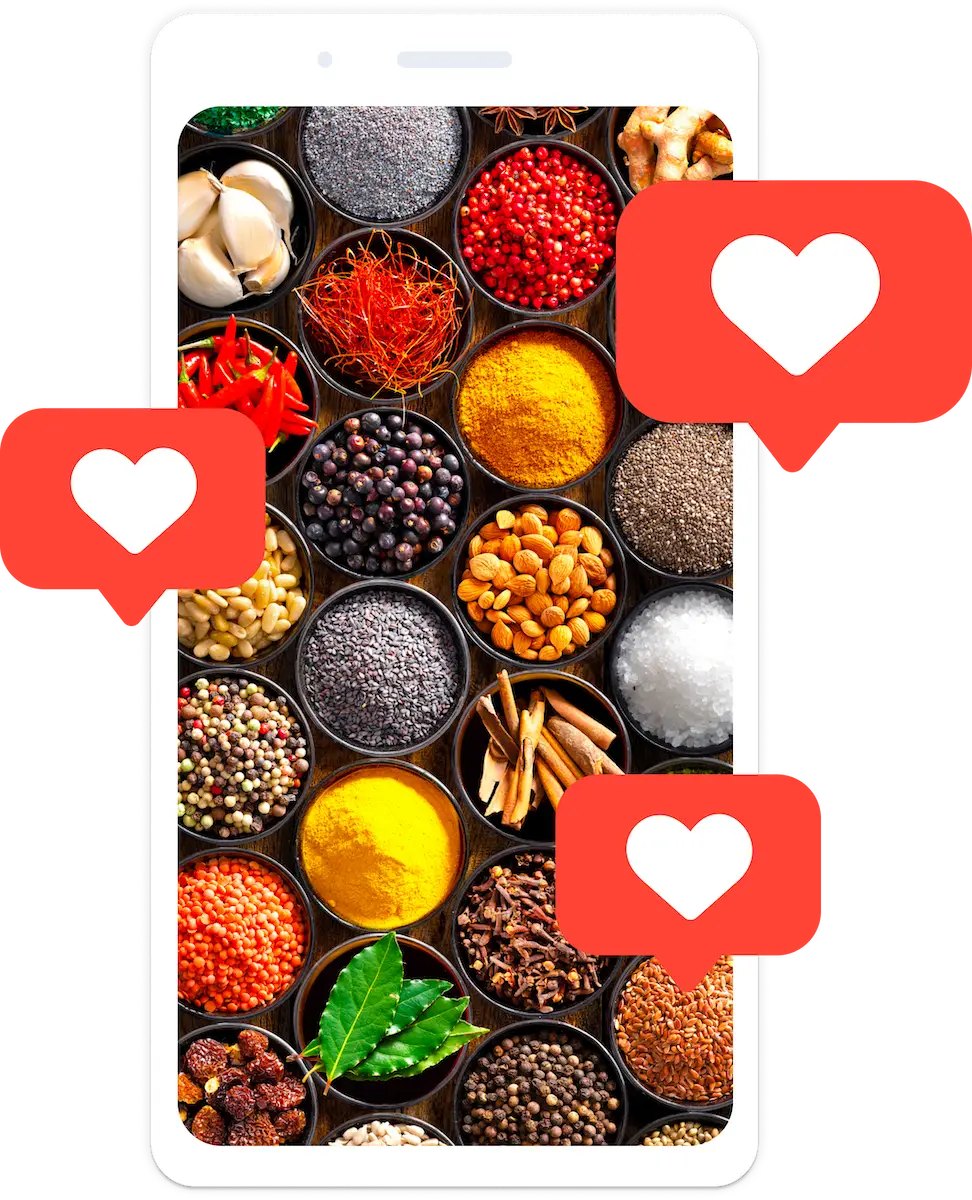Marketing
10 Restaurant Marketing Tactics to Try in 2024
In the modern landscape, restaurants need to test new tactics and measure what moves the needle.
With nearly 700,000 restaurants across the United States, diners have no shortage of options on what to eat or where to order.
That’s why restaurant marketing is essential. Restaurants need to make a concerted effort to establish their brand, reach out to their consumers, and re-engage past diners in order to earn and keep a sustainable share of the market.
Restaurant marketing entails so much more than creating advertisements or maintaining a social media page. With the right tactics and focus, restaurants can engage in effective and impactful marketing that boosts their bottom line and number of loyal customers.

RESOURCE
Restaurant Marketing Plan Template
Download the free restaurant marketing plan template from BentoBox
10 Restaurant Marketing Ideas for 2024
Effective restaurant marketing ensures businesses send the right messages to the right diners, through the right channels, at the right time. It takes effort, but smarter marketing will help a restaurant maximize the opportunities this year presents.
Plus, modern restaurant marketing is easier than it sounds. Restaurants can utilize an abundance of channels, tools and platforms to spread their message in a visual, authentic and engaging way — both online and off.
Here are ten marketing tactics restaurants should consider trying in 2024.
1. Redesign Your Website
A restaurant’s website is often the first thing someone will see after typing the business’s name into Google. When interested diners click on the restaurant’s site and see an outdated design, no clear way to order online, no link to make a reservation, and no easy way to view the menu, it’s a huge missed opportunity and makes a bad impression.
With online search volume not slowing down, restaurants need to capitalize on demand by building and perfecting their websites.
The first step is to ensure a website meets the basic requirements of SEO, or search engine optimization. These actions help the restaurant’s own website outrank third-party sites the restaurant may be listed on, like Grubhub or Facebook. SEO tactics for restaurants include optimizing for relevant keywords and search terms, ensuring the website loads quickly and making the website responsive to all device types. For maximum efficiency, use an SEO plugin or use a web platform that has SEO best practices built in.
Read more: 10 Most Popular Restaurant Website Builders
The second step is to make the website on-brand and easy to navigate. An example of this practice done well is the website for Washington, DC’s Federalist Pig. As soon as the page loads, there is a clear list of relevant options on the header navigation for the site, such as viewing menus, locations, and catering options. The design is on-brand, features food imagery, and is easy to navigate for new and existing customers. Utilizing a restaurant website builder ensures restaurants can make their site consistent with their business’s design and rank well in search.
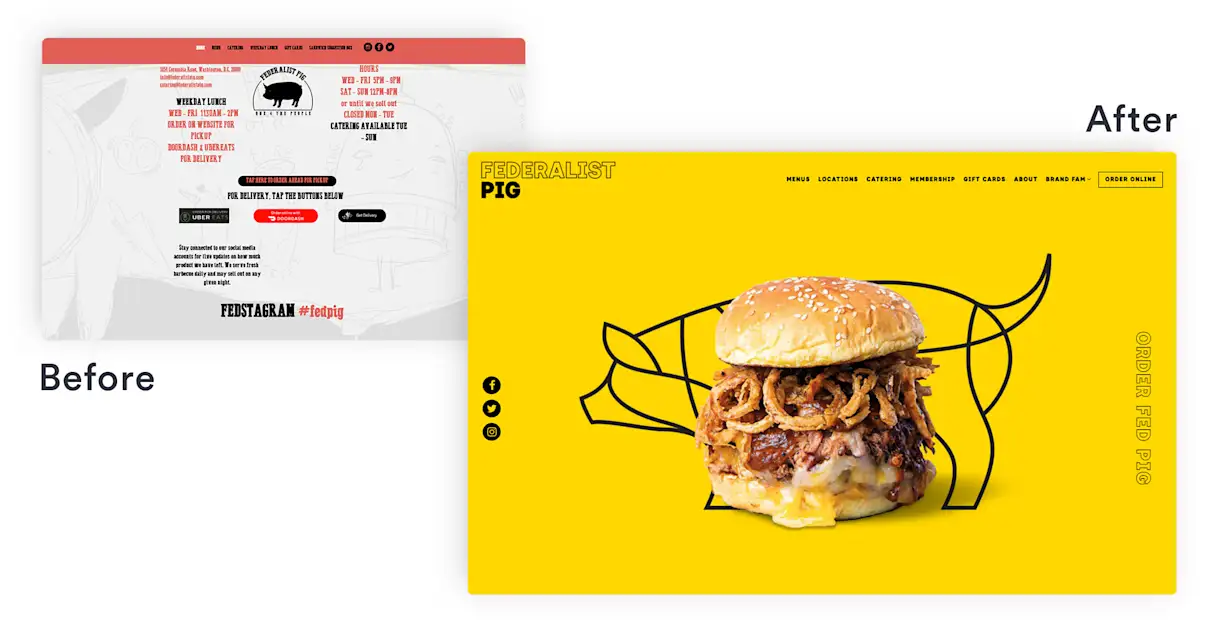
Federalist Pig also has two clear links for visitors to place an order online — and optimized online ordering is a must-have for restaurant marketing in 2024. Direct online ordering reduces or eliminates commission fees charged by third-party marketplaces, which allows restaurants to serve orders at a lower cost. It also allows restaurants to capture customer’s email addresses and enroll them in loyalty programs (both of which will be covered next).
Read more: The Best Online Ordering System for Restaurants
2. Invest in Email Marketing
No, email marketing is not an outdated practice. Restaurants using restaurant email marketing software see an average of $96 in revenue for each click on a marketing email, plus a 247% increase in repeat diners. These emails can be set up quickly and sent automatically based on how recently someone ordered. For example, seven days after customers order, they can get a re-engagement email that’s triggered without staff lifting a finger. This feature helps restaurants stay top-of-mind for guests and reach them when the time is right.
Read more: A Beginner's Guide to Restaurant Email Marketing
Using email addresses collected from online ordering or their website, restaurants can enroll opted-in diners to automated email campaigns. These messages routinely send communications to customers, offering discounts or reminders to reorder. For restaurants like Loring Place, email marketing can generate more than $8,000 in revenue from just one campaign.
Read more: 9 Ways to Grow Your Restaurant's Email List
Still, email marketing needs to be done well to reap its benefits. Hundreds of billions of emails are sent every day, so a restaurant’s promotion can’t just be white noise. Some best practices to make a restaurant marketing email stand out include:
Using quick yet catchy subject lines, with the occasional emoji 🍕🍦
Offering a discount to incentivize opening the email
Testing email send times for optimal open, click and order rates
Employing an on-brand email template for consistency
Utilizing restaurant email software to automate messaging
Following these restaurant email best practices
Read more: 27 Subject Line Ideas for Your Restaurant Emails
3. Create a Digital Loyalty Program
Loyalty programs are an effective way to engage existing diners and encourage repeat visits and higher orders. Incentivized to earn their next reward, loyalty members are often eager to (over)spend — one study found that diners pay 92% more when enrolled in a restaurant’s loyalty program.
The biggest challenge for restaurants has always been acquiring new loyalty customers. The rise of direct online ordering mentioned above, along with the development of digital restaurant loyalty tools, has made this process much more scalable. Rather than allowing third-party apps to own online diner data, restaurants are capturing emails for themselves and re-engaging them with digital incentives.

RESOURCE
25 Creative Restaurant Instagram Ideas
Inspiration from the largest restaurant social accounts, with advice on how to apply it to your own strategy.
4. Leverage New Social Networks & Features
Social media is becoming more visual and eye-catching, with two key restaurant social media sites reigning supreme.
First up, Instagram demands a restaurant’s presence — not just for likable food pics, but also for sharing promotions and showcasing staff bonding. For example, the Instagram page for Gramercy Tavern mixes images of food, new staff, and the team in action. The profile also links out to the restaurant’s website and drives to their reservations page.
Read more: How to Use Instagram for Restaurant Marketing
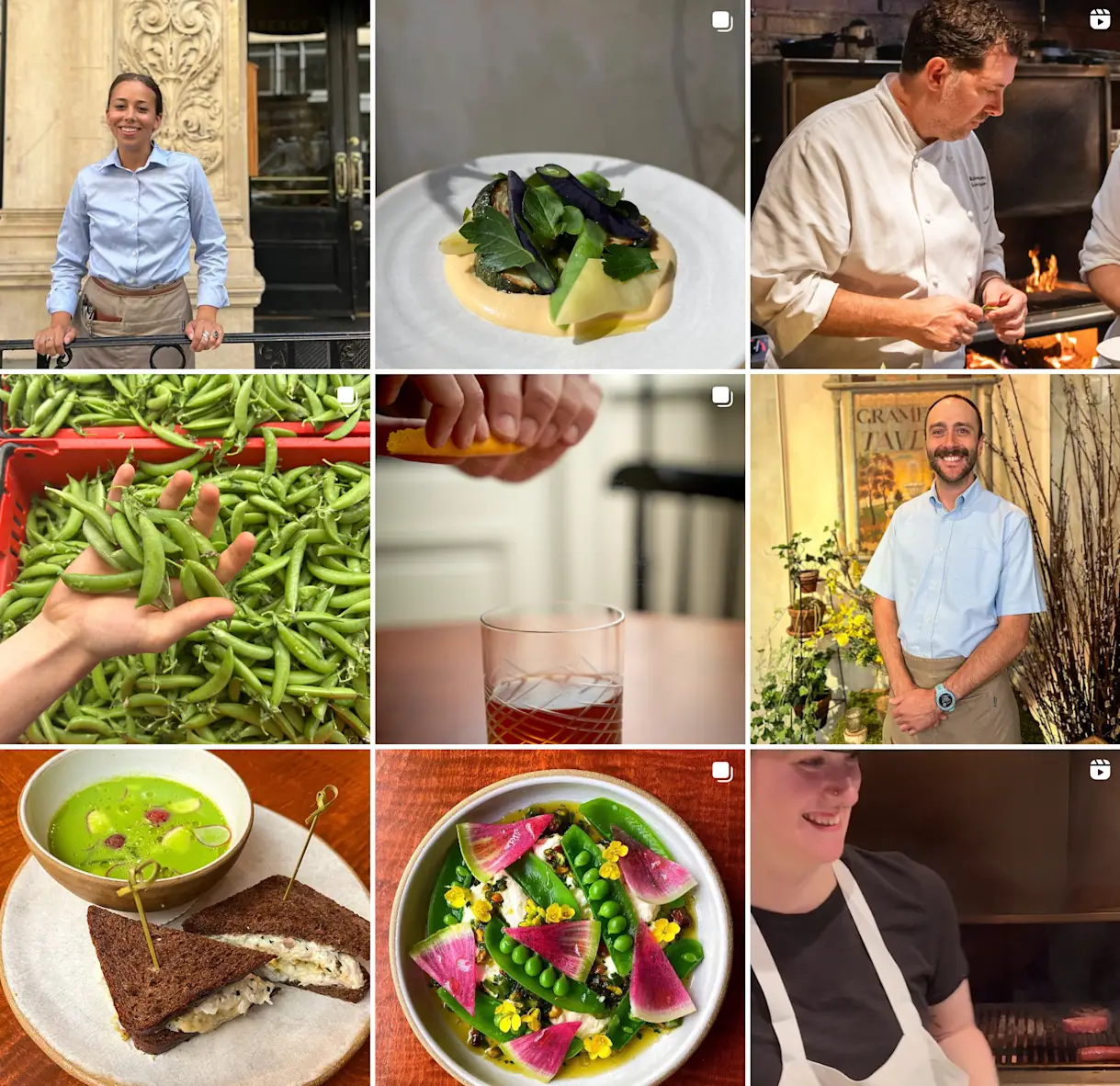
Instagram and Facebook are owned by the same parent company, and both networks allow restaurants to place “Order Food” buttons and CTAs on their pages, which can immediately turn social media visitors into paying customers. With BentoBox online ordering, restaurants can actually connect their ordering platform to their social pages, making it even easier to capture online orders.
With integrations, Instagram content can also connect automatically to a restaurant's website, creating a dual purpose for the channel and adding more visuals to the restaurant’s page. San Francisco Greek fine-casual spot Souvla built its website with BentoBox, which offers this easy integration.
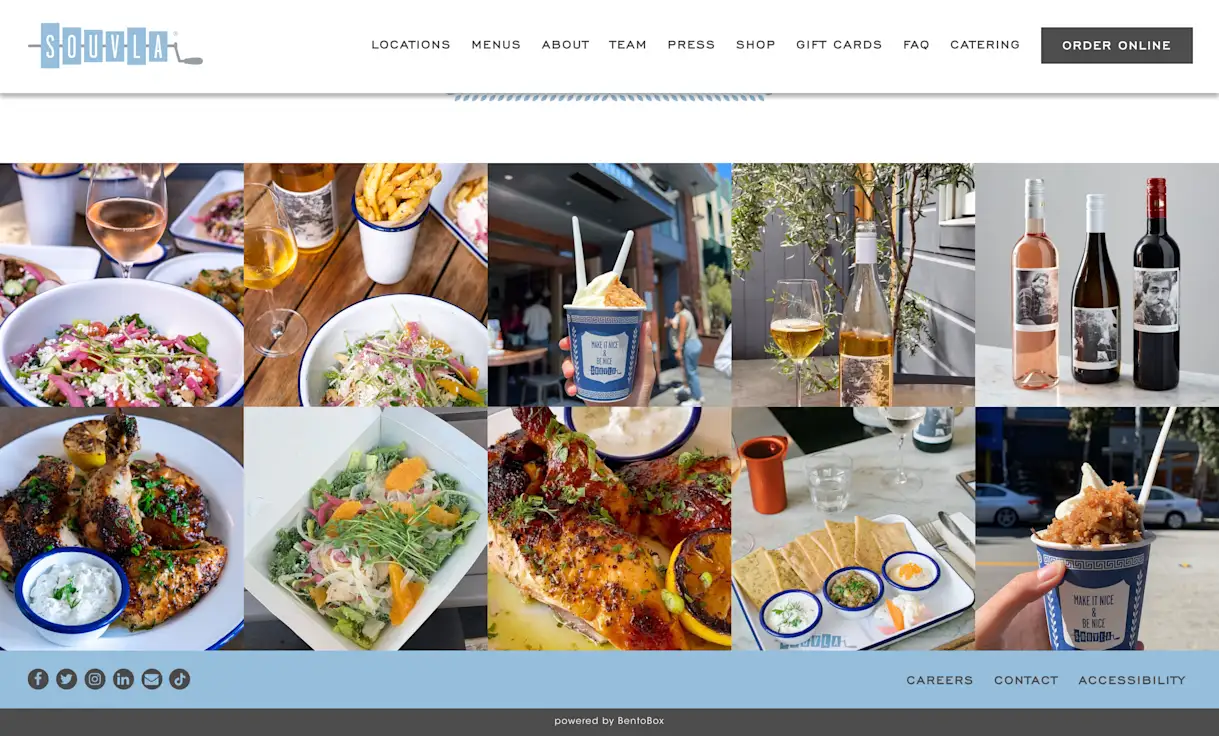
Next up is TikTok, where the #restaurant hashtag has generated nearly 23 billion views.
While much of this content is user-generated by customers making videos of great-looking food, restaurants have a unique opportunity to jump into this platform and generate high levels of organic reach. Los Angeles deli Ggiata is building a following by sharing videos of staff completing viral challenges.
Read more: How to Use TikTok for Restaurant Marketing
“Marketing via social media doesn't just have to come from our own restaurant accounts,” said Colby Kingston, social media manager at BentoBox. “If downloading TikTok for your restaurant seems too overwhelming, consider inviting some influencers to dine with you in exchange for sharing about your restaurant on the platform.”
Read more: A Restaurant’s Guide to Influencer Marketing
5. Advertise on Social Media
Organic social media posting is great for engaging with existing followers, but what about using social media ads to acquire more attention?
Reaching people on social media without promotional spend is harder than ever (especially on Facebook and Instagram), but ads connect the gap between a restaurant’s online presence and potential customers.
It’s important to put advertising dollars behind initiatives that will generate the most revenue for the business. Other social media advertising ideas include promoting open job positions, online ordering discount codes, and upcoming events.
Advertisements on social media vary in instruction by site. Here are some resources on how to get started for each.
6. Lean Into Word-of-Mouth Marketing
Sometimes, a restaurant's customers are its best marketing channel. After all, 89% of diners trust recommendations from friends and family.
An effective restaurant word-of-mouth marketing strategy acquires referred diners through social media posts, reviews, and even the classic art of conversation. At its core, word-of-mouth requires a restaurant to lean into the guest experience for all of its diners, thereby sending satisfied customers out to advocate for the business.
One specific way to turn customers into marketers is by selling wearable restaurant merchandise like hats, shirts, totes, and hoodies. Georgia brewery Two Birds Taphouse, for example, uses its online merchandise store to sell tote bags with the restaurant’s logo, turning wearers into walking billboards for the business.
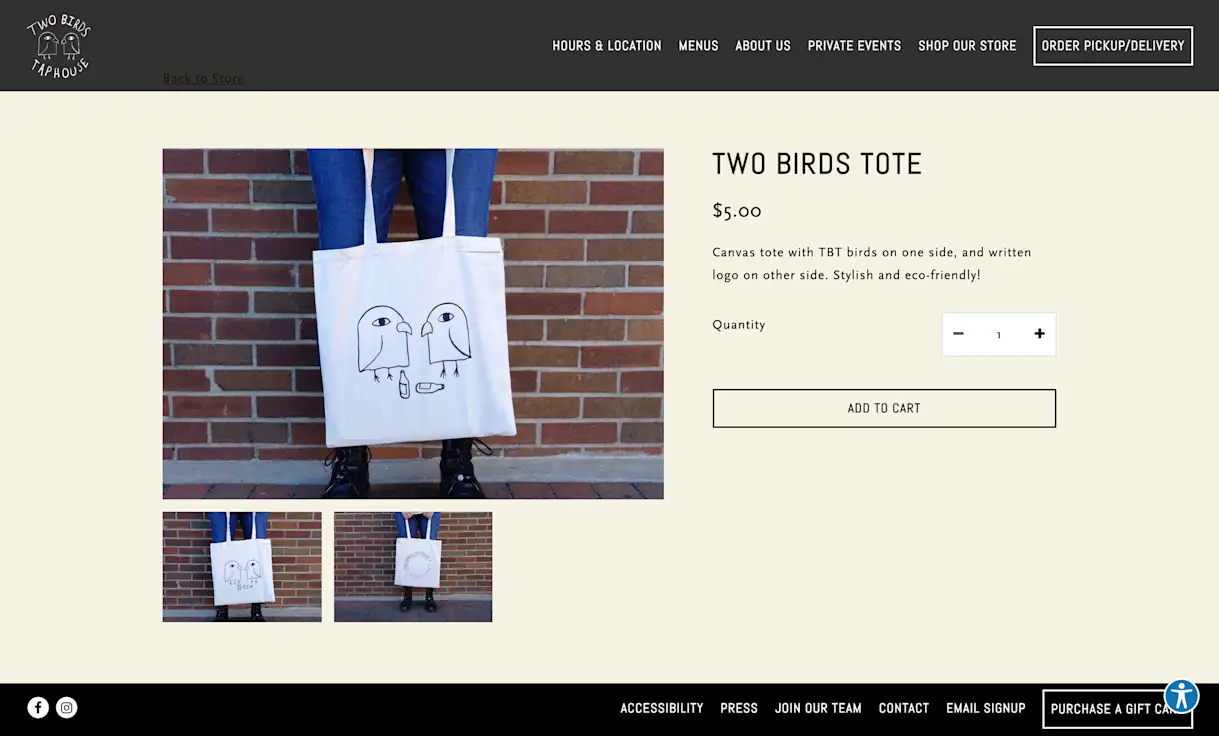
If you've hesitated to produce and sell restaurant merchandise, now is the perfect time to get started. According to designer Rachel Comey, "There’s a trend in New York right now where people are wearing merch: carrying totes from local delis…or their favorite steakhouse.” If you've created a strong connection with customers and make it easy for them to buy merchandise on various channels, this can become a valuable source of revenue and word-of-mouth marketing.
7. Develop a Review Response Strategy
Responding to reviews is hardly fun — particularly when they’re negative. However, a thorough review response strategy can prevent a restaurant from losing customers before it has the chance to engage with them. This is because if someone is searching for a restaurant on Google, Yelp, Facebook, or TripAdvisor, one bad review can be enough to cause uncertainty.
The tactic here? Set aside 10 minutes every day (yes, every day) to respond to reviews, whether they are positive, negative or mixed. Doing this shows how committed the restaurant is to learning from customers and acting on their feedback. Plus, great review responses can change peoples' minds after the fact. Note how a speedy response from the team at Mazra brought this Yelp reviewer’s rating up one star.
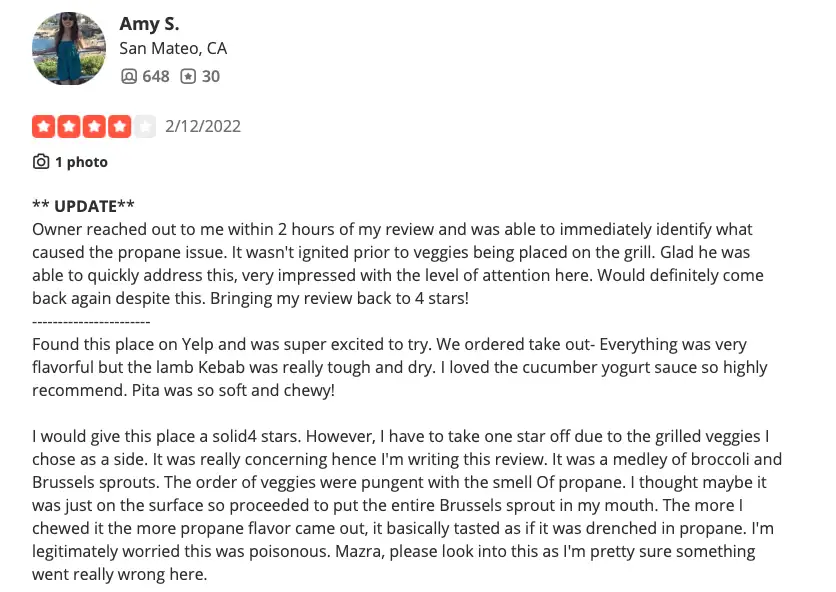
8. Experiment with New Events
Events and specials can get guests out of their homes and into the bar or dining room. Whether you're new to events or already a seasoned host, you should be constantly brainstorming new ways to drive foot traffic.
Popular event ideas to consider include:
Live music
Trivia
Comedy nights
Happy hour
BOGO or two-for-one day
Rotating daily menu specials
Trying these events on slower days in the week can help the restaurant generate more weekly revenue, while also attracting and entertaining new diners. Restaurants can also use events software to plan and promote these events, while also collecting registrant information and sharing upcoming event details with them.
Read more: 38 Restaurant Event Ideas to Drive Revenue
9. Repurpose User-Generated Content
User-generated content (UGC) combines elements from social media marketing and word-of-mouth marketing. The practice amplifies what loyal diners and biggest fans say online by re-sharing reviews, photos, and social media posts on the restaurant’s website and social media channels. This shows people that guests love the restaurant so much they’re willing to post and talk about it, and reduces the amount of time restaurants spend creating content themselves.
One of the best ways to promote UGC is to share tagged Instagram posts or stories to the restaurant account’s own story, like San Antonio’s Best Quality Daughter does.
10. Embrace the Community
There are likely thousands — if not millions — of people in a restaurant’s area that the restaurant hasn’t served. Targeting locals through direct mail ads, local PR, and transportation ads can help bridge that gap. If you want to make sure the community takes note of your participation (and your brand) consider sponsoring local events. Whether it’s school, sporting, or charity events, restaurants can position themselves as an integral and supportive part in their community through sponsorship. Restaurants can also bring the events in-house with revenue-sharing nights for local organizations.
Lula Cafe in Chicago has an entire page on their website dedicated to their community efforts, which includes details on their partnerships. There’s also a call to action on how to reach out to coordinate fundraisers with the restaurant.
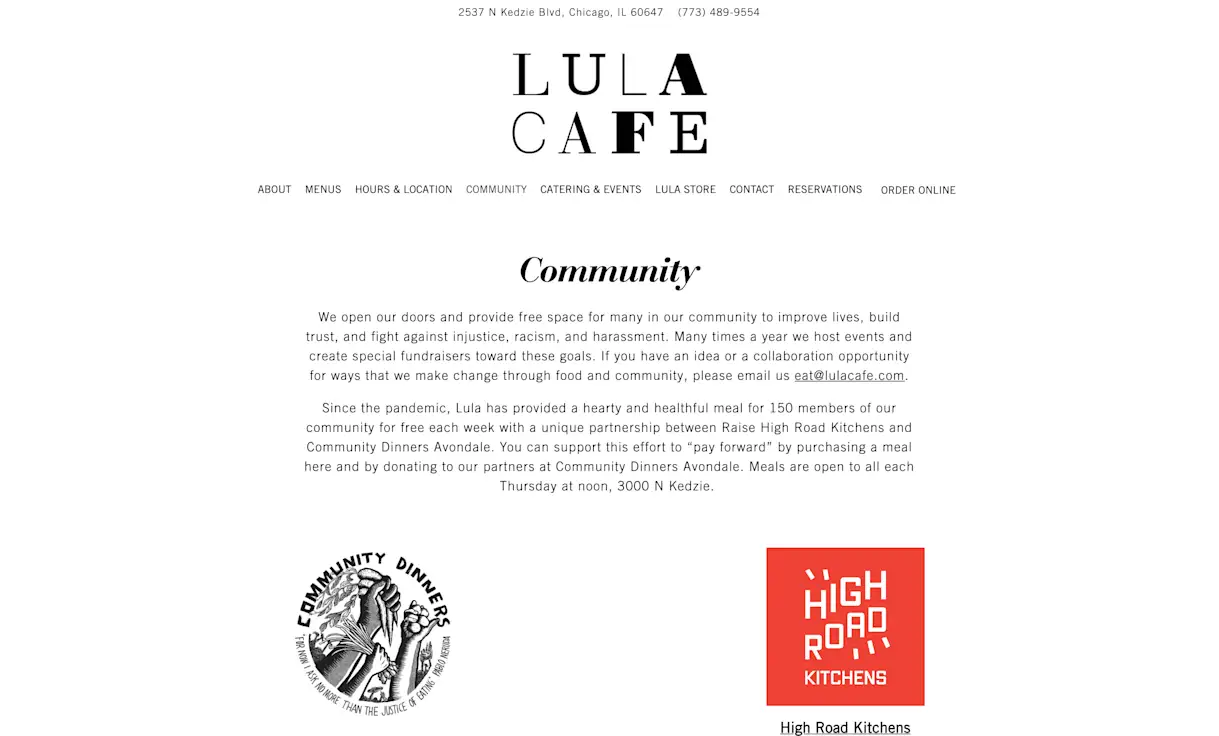
Restaurant Marketing in 2024
Restaurants are facing a sea of opportunity in 2024 — and effective, creative, visual marketing will help them seize that opportunity. However, if a potential diner discovers a restaurant online, it needs to be well-positioned to earn their business. That’s where restaurant technology like restaurant website, email, and online ordering software comes in. Make sure your restaurant is prepared to thrive online in 2024. Equip your restaurant with BentoBox’s Marketing and Commerce Platform and take ownership of your business’s online presence.

BentoBox Marketing & Commerce Platform
Want to stand out online? Let's chat.
Drive revenue directly through your website.
Recommended

Marketing
38 Restaurant Event Ideas to Drive Revenue
July 19, 2023
Hosting events is a great way to engage your community, create memorable experiences, and boost sales.
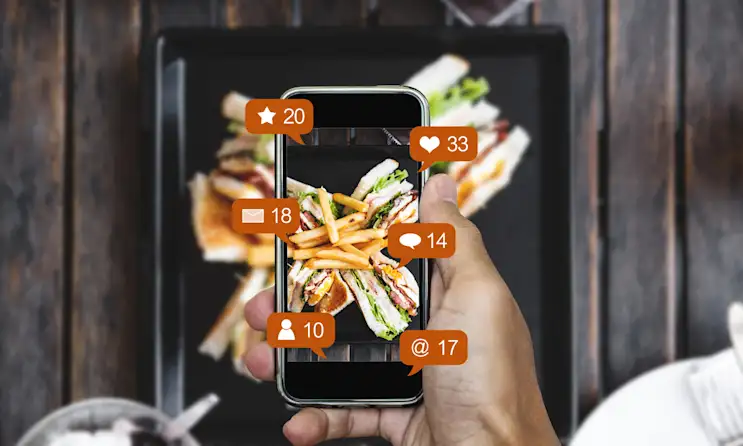
Marketing
Social Media Marketing for Restaurants: 10 Keys to Success
April 28, 2022
We hosted a webinar with two leading experts on restaurant social media. They boiled success down to 10 essential tips.

Marketing
How to Use TikTok for Restaurant Marketing
June 7, 2022
At first, TikTok may seem too young, fast and confusing for restaurant marketers. But it's worth overcoming those hesitations.


